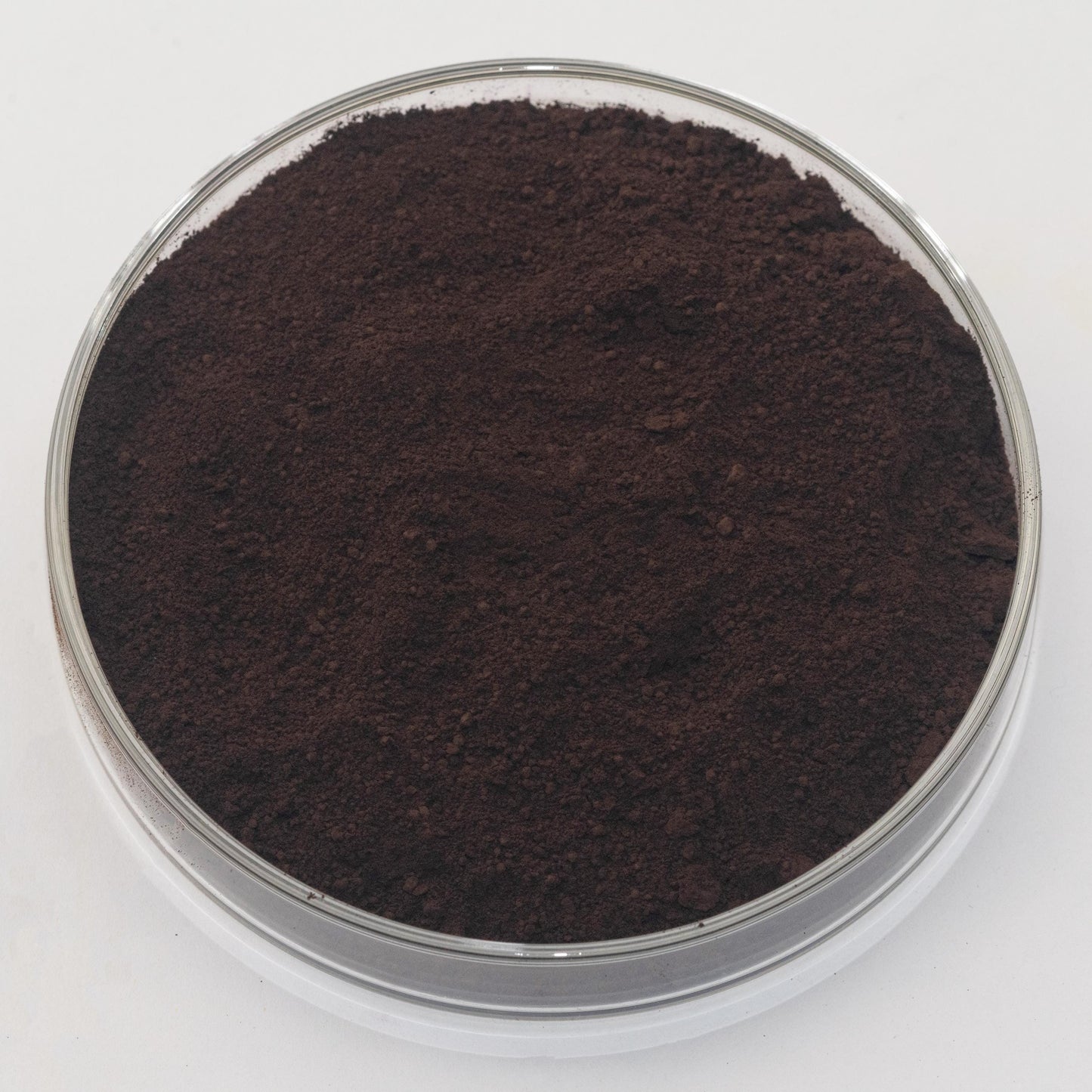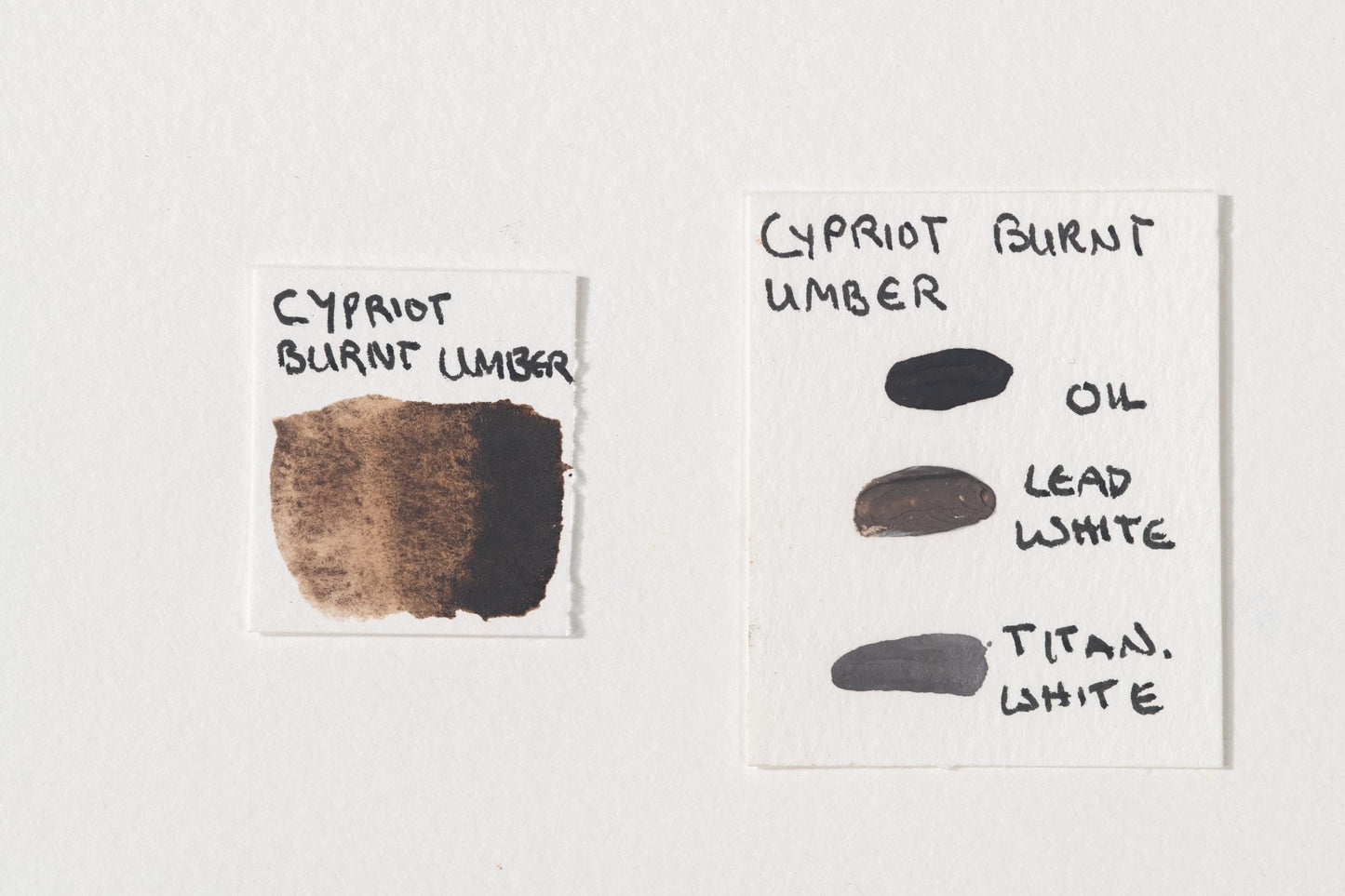Cypriot Burnt Umber
Cypriot Burnt Umber
Couldn't load pickup availability
Share



Description
Cypriot Burnt Umber is a handmade single earth pigment made through a historical process of extraction, drying, grinding, and calcination. This pigment originates from Cyprus, a region known for its high-quality umbers, and is created by heating raw umber to intensify its warm brown hue. The calcination process enhances its richness, deepening the color to a warm, reddish-brown with excellent opacity and covering power.
Cypriot Burnt Umber has exceptional lightfastness, making it highly durable for both classical and contemporary artwork. It blends seamlessly with other earth pigments, offering warm and harmonious tones in painting. Its semi-opaque quality allows for beautiful layering and depth in oil, watercolor, and tempera applications. Compared to synthetic browns, it provides a softer, more natural color, ideal for landscape, portrait, and decorative painting.
History
Umber pigments have been used in art since prehistoric times, with evidence of their use in ancient cave paintings. The natural abundance of umber in Cyprus made it a major supplier of high-quality earth pigments for centuries.
During antiquity, both raw and burnt umber were widely used by Egyptian, Greek, and Roman artists for frescoes, ceramics, and architectural decoration. The heating process to create burnt umber was already well established, as it enhanced the pigment’s warmth and depth, making it an ideal choice for shading and contrast.
In the Renaissance, burnt umber became an essential pigment for artists like Rembrandt, Caravaggio, and Titian, who relied on its warm, rich tone for underpainting, glazing, and shadow work. The fast-drying properties of burnt umber made it particularly useful in oil painting, allowing for the rapid build-up of layers. In the pictured artwork 'The Night Watch' (Dutch: De Nachtwacht) by Rembrandt van Rijn, Burnt Umber is used throughout to create the rich brown tones in both the background and foreground.
By the 18th and 19th centuries, Cyprus remained a leading producer of umber pigments, supplying European painters with this essential color. It was widely used in academic painting techniques, where its natural warmth and stability made it indispensable in portraiture, landscape painting, and classical realism.
Today, Cypriot Burnt Umber continues to be a preferred pigment in fine art and conservation, preserving its historical significance and natural beauty.
Health and Safety
Precautions:
Keep out of reach of children and pets.
Do not consume.
Not for cosmetic or food usage.
Do not spray apply.
For further health information contact a poison control center.
Use care when handling dry pigments and avoid dust formation.
Use particular caution with fibrous, fine, or toxic pigments.
Do not eat, drink, or smoke near dry pigments.
Avoid breathing in pigment dust and use a NIOSH-certified dust respirator with sufficient rating for dry pigment.
Wash hands immediately after use or handling.
If dust is likely, always wear protective clothing to keep out of eyes, lungs, off skin, and out of any contact as well as keep area ventilated.
This product may contain chemicals known by the State of California to cause cancer, birth defects, or reproductive harm.
Warnings and bottle information are abbreviated.
Pigment Information
Pigment Type: Natural (Iron and Manganese Oxide) from minerals (Goethite and Manganite, heat-treated) (Cyprus)
Suitable Mediums: Watercolor, Oil, Tempera, Acrylic
Lightfastness: Best
Opacity: Semi-opaque
Other Names: Cyprus Burnt Umber, Mediterranean Burnt Umber, Earth Brown
Color Index Code: PBr7
Image: 'The Night Watch' (Dutch: De Nachtwacht) by Rembrandt van Rijn from the Rijksmuseum



